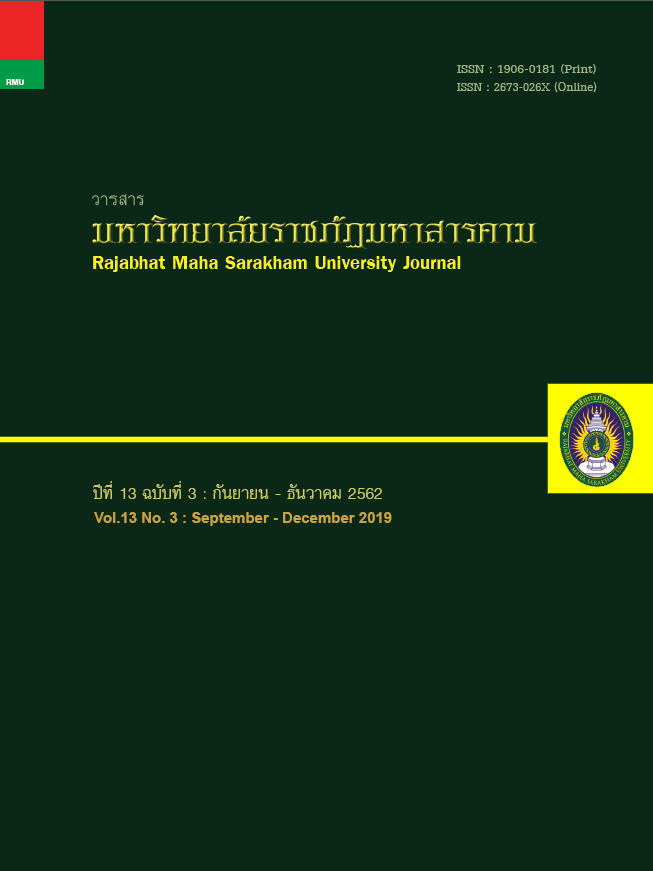การมองอนาคต
Main Article Content
บทคัดย่อ
การมองอนาคต เป็นกระบวนการวิจัยที่เน้นการคาดการณ์เหตุการณ์ในอนาคตอย่างเป็นระบบ และมีความน่าเชื่อถือโดยใช้กระบวนการ หรือวิธีการที่หลากหลายผสมผสานกัน เรียงลำดับขั้นตอนที่ได้มาซึ่งคำตอบตามความเหมาะสมรูปแบบการมองอนาคตมีแนวคิดหลากหลายสร้างสรรค์มาเพื่อสร้างความน่าเชื่อถือของคำตอบ ซึ่งเน้นให้ครอบคลุมการใช้วิธีวิจัยที่ครอบคลุมองค์ประกอบที่กำหนดของแต่ละองค์ประกอบ คือ การสร้างสรรค์ ความเชี่ยวชาญ การมีส่วนร่วม และเหตุการณ์ประกอบ ภายในโมเดลบรรจุเทคนิควิธีการวิจัยทั้งเชิงปริมาณและเชิงคุณภาพ วางในตำแหน่งที่สอดคล้องกับแต่ละองค์ประกอบข้างต้น เมื่อต้องการมองอนาคตเรื่องใด สามารถเลือกชนิดของวิธีการวิจัยสำหรับการมองอนาคตมีความเหมาะสม มีหลักการ และสมดุล ตามองค์ประกอบที่วางไว้อันเป็นประโยชน์ ในการเลือกใช้วิธีวิจัยที่น่าเชื่อถือในจำนวนวิธีที่ใช่ที่เหมาะสมต่อการได้มาซึ่งคำตอบของงานวิจัย
Article Details
1. บทความที่ลงตีพิมพ์ทุกเรื่องได้รับการตรวจทางวิชาการโดยผู้ประเมินอิสระ ผู้ทรงคุณวุฒิ (Peer Review) สาขาที่เกี่ยวข้อง อย่างน้อย 3 ท่าน ในรูปแบบ Double blind review
2. ข้อคิดเห็นใด ๆ ของบทความที่ลงตีพิมพ์ในวารสารมหาวิทยาลัยราชภัฏมหาสารคาม นี้เป็นของผู้เขียน คณะผู้จัดทำวารสารไม่จำเป็นต้องเห็นด้วย
3. กองบรรณาธิการวารสารมหาวิทยาลัยราชภัฏมหาสารคาม ไม่สงวนสิทธิ์การคัดลอกแต่ให้อ้างอิงแสดงที่มา
เอกสารอ้างอิง
Sathitkunarat, S. (2009). Technology Foresight for Strategy Planning. Seminar 12 May 2009. Policyand Planning Bureau, Office of the Permanent Secretary, Ministry of Science and Technology.
National Science and Technology Development Agency (NSTDA). (2001). APEC Center for Technology Foresight. Bangkok: National Science and Technology Development Agency. pp. 13-19.
AFS’s Global Futures Network. (2010). Foresight Graduate Programs – Global List. Acceleration Studies Foundation.
Cuhls, K. (2003). From Forecasting to Foresight Processes – New ParticipativeForesight Activities in Germany. Journal of Forecasting. 22: 93-111.
Popper, R., and et.al. (2010). Evaluating Foresight. Santiago de Cali: Universidad del Valle (Columbia).pp. 13-21.
Masathienwong, C. (2006). Future-oriented educational policies and strategies for Thai Youths. Dissertation. Doctor of Philosophy Program in Development Education, Faculty of Education,Chulalongkorn University.
Foodand Agriculture Organizationofthe United Nations. (2014). Horizon Scanning and Foresight An overview of approaches and possible applications in Food Safety. FAO Early Warning/Rapid Alert and Horizon Scanning Food Safety Technical Workshop. Rome, 22-25 October,2013.
Sukumal, P., Lincharoen, U., and Panawong, C. (2018). Scenarios of Mahachulalongkornrajavidyalaya University in the decade. Journal of Graduate Studies Review, 14(1) : 137-161.
Ghazinoory, S., Abdi, M., and Azadegan-Mehr, M. (2011). Swot Methodology: A State-of-the-Art Review for the Past, A Framework for the Future. Journal of Business Economics and Management,12(1): 24-48.
Millot, G., and Buckley, N. (2013). Guide to organizing scenario workshops to develop partnerships between researchers and civil society organisations. European Community's Seventh Framework Programme (FP7/2007-2013) under grant agreement n° 244264.
Verapreyagura, P. (2005). Convergence or Parallel between Poll and Survey Research. Journal of Architectural/Planning Research and Studies. 3: 241-250.
Nayebi, M., and Ruhe, G. (2015). Analytical Product Release Planning. The Art and Science of Analyzing Software Data. Chapter 19. 555-589.
Mulder, P. (2017). Morphological Analysis. Retrieved [insert date] from ToolsHero: https://www.toolshero.com/creativity/morphologicalanalysis-fritz-zwicky/
Alston, J.M. (2019). What's the difference between a conference, a seminar, a workshop and a symposium? Retrived from https://conferencemonkey.org/insight/whats-thedifference-between-a-conference-a-seminar-aworkshop-and-a-symposium-1075915, 28 July 2019.
Georghiou, L, Harper, J.C., Keenan, M., Miles, I.,and Popper, R. (2008). The Handbook of Technology Foresight: Concepts and Practice. Edward Elgar Publishing, Inc. USA.
Tungsiripat, R., and Tangcharoensathien, V. (2003).Stakeholder Analysis. International Health Policy Program – Thailand Journal of Health Science. 12(6):865-875.
Fernandez, L. (2018). Qualitative Interview Analysis: The Use of Systemic Functional Linguistics to Reveal Functional Meanings. FQS.19(2), Art. 6.
Lan K.K.G. and DeMets G. (1983). Discrete sequential boundaries for clinical trials. Biometrika. 70(3): 659-663.
Srisap, J., Tua-ngam, P., Rudrakanjana, P. (2017). Trends Analysis of dental technology patent applications. Mahidol R2R e-Journal. 4(2): 41-53.
Jermprayong, S. (2011). An overview of Scholarly Productivity in ASEAN: A Preliminary Bibliometric Analysis. RSU Library Journal, 17(2): 5-16.
Tubtimjaroon, N. (2012). Benchmarking: Management Tool That Institution Should Not Overlook. Panyapiwat Journal, 4(1): 97-111.
Intaprom, W. (2015). The Importance of Literature Review for Research. Social Sciences Research and Academic Journal, 10(30) : 17-30.
Chianchana, C. (2017). Creating and Developing Model. Silpakorn Educational Research Journal,9(1): 1-11.
Popper, R. (2008). How are foresight methods selected?. Foresight, 10(6): 62-89.
Conway, M. (2010). An Overview of Forsight Methodology. Thinking Futures. form http://thinkingfutures.net/wpcontent/uploads/2010/10/An-Overview-of-Foresight-Methodologies1.pdf, 4April 2019.
Popper, R. (2009). Introduction to iKnow. iKnow News. 1: 1-8.


